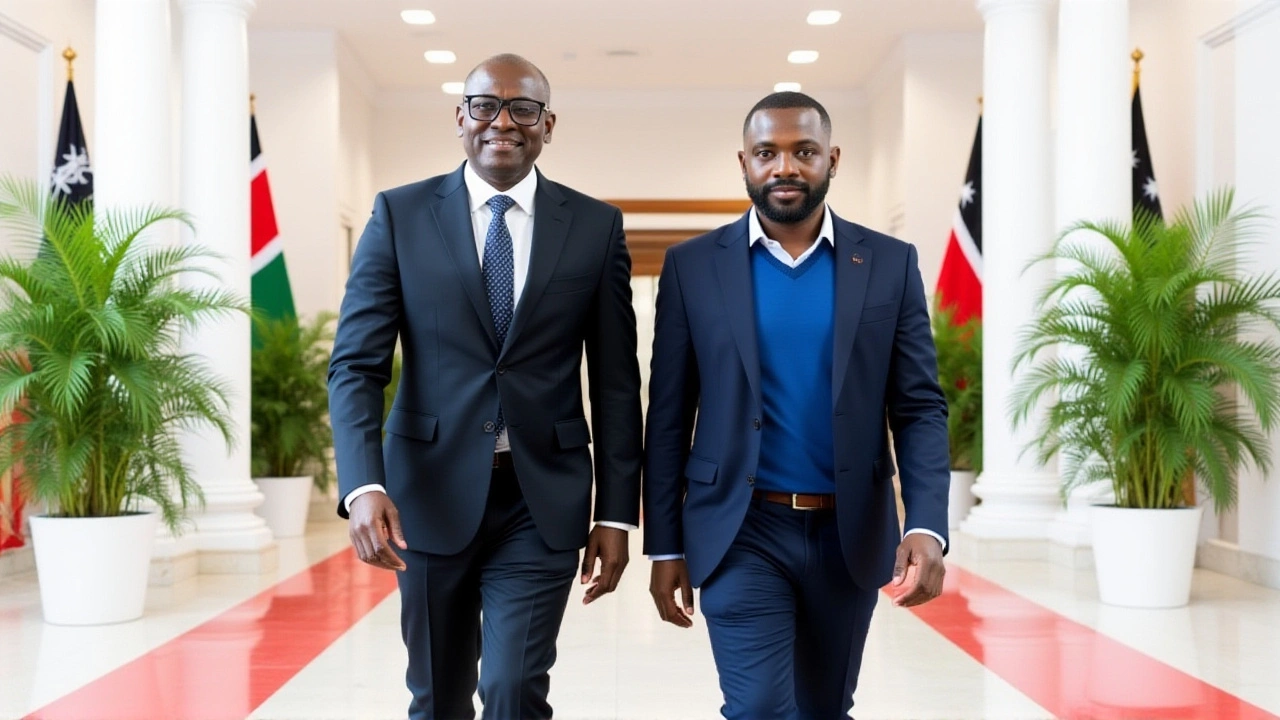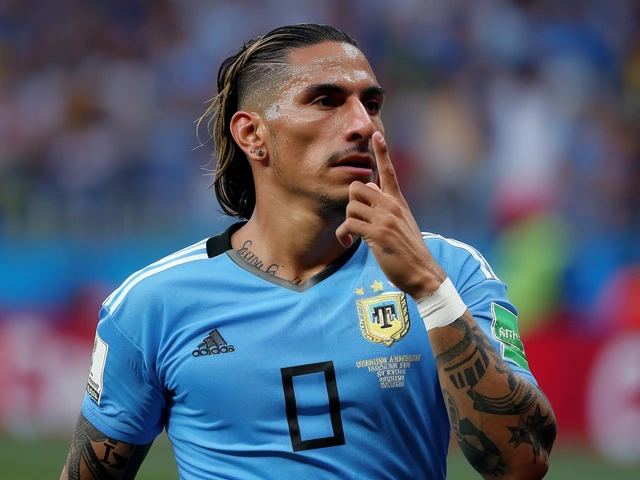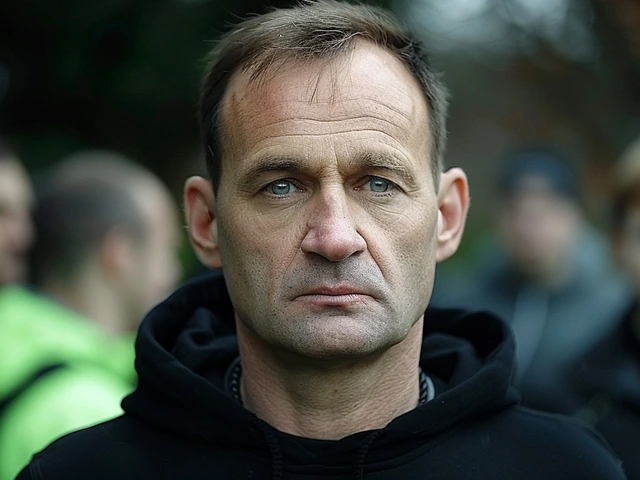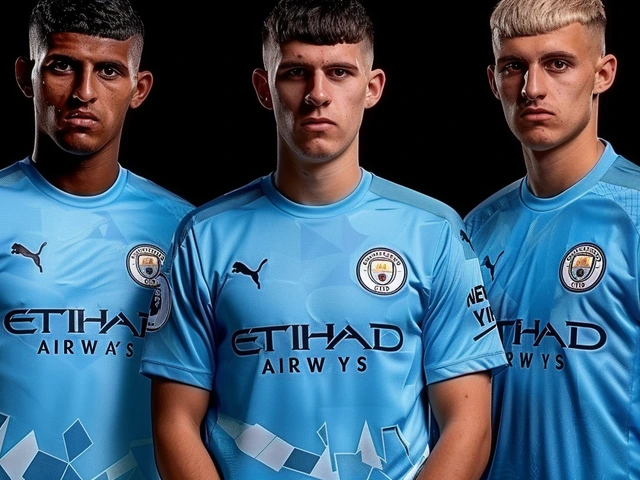When William Samoei Ruto, President of Kenya arrived at the Kabarak estate on October 10, 2025, he did more than lay a wreath – he signaled a fresh political reconciliation with the family that once ruled the nation.
The ceremony took place at the mausoleum of the late former President Daniel Toroitich Arap Moi, a structure that has become a symbolic crossroads for Kenya’s two biggest political lineages. Ruto’s visit came a day after a closed‑door meeting with Gideon Moi, the 52‑year‑old KANU National Chairman and son of the late president.
Why Kabarak Became the Stage for a New Chapter
For years, relations between Ruto’s United Democratic Alliance (UDA) and the Kenya African National Union (KANU) have flickered between rivalry and tentative partnership. The October 9 meeting at State House, Nairobi, which was disclosed on October 9, set the tone: Gideon Moi announced his withdrawal from the Baringo Senatorial by‑election slated for November 27, 2025.
That decision sparked street protests in Baringo County when supporters gathered at the local air strip, only to watch their candidate disappear from the nomination schedule. The uproar left many wondering whether the state had engineered a “lock‑out.” Ruto’s presence at Kabarak was, therefore, not just about paying respects to a former head of state; it was an attempt to ease the tension that had escalated into public unrest.
Details of the Kabarak Gathering
Two military helicopters touched down on the farm’s helipad, ferrying the President, several UDA heavyweights and, most notably, Oscar Sudi, the Member of Parliament for Kapseret. Media outlets reported attendance ranging from 3,000 (The Star) to more than 5,000 (The Standard Digital) KANU loyalists.
- 5:00 PM UTC – Ruto’s arrival in Nakuru County.
- 5:15 PM – Wreath‑laying at the Moi mausoleum.
- 5:30 PM – Ruto’s remarks on national cohesion.
- 6:00 PM – Open dialogue with KANU officials.
During his remarks, Ruto said, “I looked for Gideon because national cohesion is bigger than our differences.” He urged KANU supporters to join forces with UDA, stressing that “development needs more hands.” The tone was conciliatory, avoiding the polarising language that often marks Kenyan electioneering.
Reactions from the Political Landscape
Naisula Lesuuda, the Samburu West MP, had earlier called on Gideon Moi to address his base directly. In the aftermath of the Kabarak talk, she praised the effort, noting that “the people need clarity, not speculation.” Meanwhile, KANU’s internal coordinators said they would relay grassroots concerns to the national office and ask for a formal briefing on the way forward.
The Independent Electoral and Boundaries Commission (IEBC) confirmed that the November 27 poll will go ahead as scheduled. With KANU out of the race, UDA’s Kiprono Chemtei now stands as the sole major contender for the Baringo senatorial seat.
What This Means for the 2027 General Election
Analysts see the Kabarak event as a rehearsal for the broader 2027 showdown. By pulling KANU into a more collaborative stance, Ruto hopes to widen his coalition beyond the UDA’s traditional strongholds in the Rift Valley and Western Kenya. The prospect of a united front could tilt the balance in constituencies where KANU still commands deep loyalty, especially among older voters who remember Moi’s era.
However, some critics warn that the rapprochement may be superficial. “If the alliance is built on short‑term convenience rather than shared policy goals, it could crumble under the pressure of a heated campaign,” said political scientist Dr. Miriam Ochieng of the University of Nairobi.
Historical Backdrop: From Blocked Meetings to Open Dialogues
The relationship between Ruto and the Moi family has not always been smooth. Back in April 2019, while serving as Deputy President, Ruto was reportedly barred from meeting the retired former President at the Kabarak residence – a snub that deepened mistrust between the two camps. Since then, the two sides have navigated a delicate dance of rivalry and occasional cooperation.
Gideon Moi’s loss in the 2022 General Election to the late William Cheptumo marked a low point for KANU’s electoral influence. Yet the party’s recent move to withdraw from the Baringo by‑election, coupled with Ruto’s overtures, suggests a strategic reset. Whether this realignment will revive KANU’s relevance or merely serve as a stepping‑stone for UDA’s ambitions remains an open question.
Looking Ahead: The Next Moves
In the weeks to come, both parties are expected to hold internal consultations. KANU officials have hinted at the possibility of endorsing a candidate in the 2027 race, though they have not ruled out staying neutral if the terms of cooperation are not satisfactory.
For Ruto, the challenge will be to translate the symbolic gestures at Kabarak into tangible policy outcomes that resonate with KANU’s base – particularly on issues like land reform, de‑volution financing, and youth employment in the Rift Valley.
Meanwhile, the IEBC will monitor the November 27 by‑election closely, ensuring that the withdrawal does not trigger legal challenges that could spill into the broader electoral calendar.
Frequently Asked Questions
How does Ruto’s visit affect KANU supporters?
The President’s appearance at Kabarak is meant to reassure KANU voters that their concerns will be heard. By framing the alliance as a matter of "national cohesion," Ruto hopes to keep supporters engaged and prevent them from feeling abandoned after the by‑election withdrawal.
What led to Gideon Moi’s withdrawal from the Baringo by‑election?
The decision followed a closed‑door meeting with President Ruto on October 9, during which both sides discussed a possible realignment. Political analysts say the move avoids a split vote that could hand the seat to an opposition candidate.
Who will contest the Baringo Senatorial by‑election?
With KANU out, the Independent Electoral and Boundaries Commission has cleared UDA’s Kiprono Chemtei as the sole major candidate. Smaller independent contenders may still file papers.
What does this reconciliation mean for the 2027 elections?
A united front could broaden Ruto’s coalition, especially in Rift Valley districts where KANU retains influence. However, the durability of the partnership will depend on policy concessions and shared campaign goals.
Are there any legal challenges expected from the withdrawal?
So far, the IEBC has upheld the November 27 date and accepted the withdrawal paperwork. Rival parties have not announced formal objections, but any future disputes could surface if KANU decides to endorse a different candidate.






Anand mishra
October 10, 2025 AT 20:00It’s fascinating to see how political choreography in Kenya can echo centuries of tribal diplomacy, especially when leaders choose symbolic sites like Kabarak to cement new bridges. The act of laying a wreath, while seemingly ceremonial, carries layers of meaning that reverberate through the collective memory of a nation still healing from past partisan bruises. Ruto’s gesture, in my view, is not merely about paying respect to the late President Moi but also a strategic move to signal openness to the older generation of voters who still hold the Moi legacy dear. By positioning himself at the very heart of the Moi family estate, he taps into a deep well of nostalgia that can be leveraged for electoral gain. Moreover, the timing-just after the withdrawal of Gideon Moi from the Baringo by‑election-suggests an attempt to pre‑empt any backlash that might arise from perceived power‑plays. The presence of military helicopters and a crowd ranging from three to five thousand underscores the theatrical nature of the event, turning it into a stage where narratives are crafted in real time. This public display of unity could serve as a rehearsal for the broader coalition-building needed for the 2027 general election, where the margins will be razor‑thin in many constituencies. The involvement of high‑profile UDA figures such as Oscar Sudi also adds weight to the message that development, not division, is the priority. Yet, it is essential to recognize that symbols alone cannot substitute for substantive policy agreements, especially on contentious issues like land reform and youth employment. The reaction from political analysts, who caution that the alliance may be superficial, is a reminder that the durability of such reconciliations hinges on the delivery of tangible benefits to the grassroots. In sum, the Kabarak visit is a masterclass in political symbolism, a calculated blend of respect, strategy, and narrative framing that could reshape alliances in Kenyan politics for years to come.
Prakhar Ojha
November 1, 2025 AT 15:26Whoa, this whole drama feels like a Hollywood sequel where the hero shows up just in time to grab the spotlight, waving a wreath like it’s a magic wand. Ruto’s swagger at Kabarak is louder than a drumline at a wedding, and honestly, the media circus surrounding the helicopters makes it look like a reality‑TV showdown. The whole “national cohesion” spiel is slick, but you can’t ignore the undercurrent of power‑grabbing that smells like fresh paint on a busted fence. If the alliance crumbles, we’ll all be left with the ashes of empty promises and a lot of confused voters.
Pawan Suryawanshi
November 19, 2025 AT 00:06🌍✌️ Watching the Kabarak meetup feels like sitting on a comfy couch and watching a long‑running series finally bring two rival houses together for a heated chat. The vibes were chill, the crowd was buzzing, and you could sense a genuine attempt at bridging the old with the new-like mixing a classic vinyl record with fresh beats. Ruto’s calm tone about “development needs more hands” added a soothing rhythm to the whole scene, and the inclusion of Oscar Sudi gave it that extra lyrical hook that keeps listeners hooked. While the ceremony was draped in symbolism, the real test will be whether policy verses match the poetic promises. Here’s hoping the next chapters write themselves with more harmony and less drama. 🎤🤞
Harshada Warrier
December 6, 2025 AT 08:46i swear u cant trust any of this. they all act like they care about the people but it's just a puppet show. the whole thing is staged 2 distract from the real agenda they're pushing. the media only shows the happy faces while the real problems stay hidden. watch out.